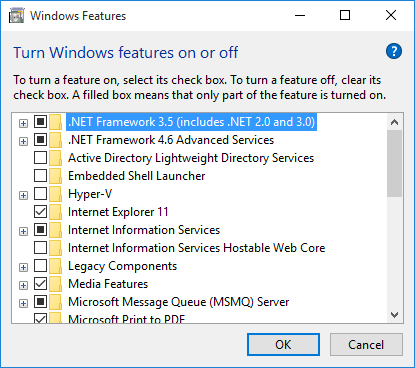Windows includes a ton of built-in features designed to be used by a wide variety of people. Of course, there is a good chance that you may not need all the features provided by Windows, or there may be some features that are disabled by default and you want to enable.
To enable or disable features, follow these steps:

Figure 1. The Windows Features dialog box.
Note that you may see some checkboxes in the features list that aren't clear and, conversely, they don't contain a check mark. Instead, they are filled with a gray color. These aren't individual features but, instead, are categories of features. Click the plus sign next to such items and they expand to show you individual features in that category that can be enabled or disabled.
It's a good idea to only disable those Windows features that you know you really don't need. If you are in doubt about a particular feature, study up on it to make sure it is one you really want to disable.
![]()
![]()
![]() This tip (10133) applies to Windows 7, 8, and 10.
This tip (10133) applies to Windows 7, 8, and 10.
Windows does a lot of nuancing to provide the user with a pleasing visual experience. All this attention to detail, ...
Discover MoreBy default in Windows 10, when a folder or file is copied or duplicated within the same folder as the original, the ...
Discover MoreSafe Mode is an essential way to regain control of a system that fails to fully boot. Windows 10 doesn't come with a way ...
Discover MoreThere are currently no comments for this tip. (Be the first to leave your comment—just use the simple form above!)
Copyright © 2025 Sharon Parq Associates, Inc.
Comments